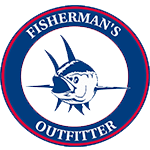How to Fish For Yellowfin Tuna
November 1, 2013
Shimano Fishing Rods & Reels
November 14, 2013Transcription
John Maher: Hi, I’m John Maher. Today, I’m here with Johnny White, owner of Fisherman’s Outfitter in Gloucester and Plymouth, Massachusetts. Today, we’re talking about custom?made terminal tackle and accessories. Welcome, Johnny.
Johnny White: Hi John, how are you?
John: Good, thanks. Johnny, tell me what are the different types of terminal tackle?
Johnny: The different types of terminal tackle that we use in our business are line, swivels, leaders, hooks, and crimps.
John: Why don’t we go through each one of those, and talk a little bit about what they are and what they do for you? What is the line? What are the different types of lines?
Johnny: The line is a monofilament line that goes on your reel. We choose to use Momoi Hi?Catch, Diamond line and presentation line that we’ve been using for 25 years. We feel it’s the best on the market today.
John: Do you use different line for different types of fish that you’re targeting?
Johnny: You’ll use different size line on different sized reels, depending on what fish you’re targeting, we’ll constitute which size will you use.
John: The larger the reel, the larger the line that you have, the more thickness on the line. What is that? Is that the gauge of the line? How is that?
Johnny: It runs in diameters and pound tests. We use anywhere from 22 to 600 pound test. The most prevalent — 80, 100, 130 and 200.
John: You mentioned swivels. What are swivels?
Johnny: The swivels attach from the line to the leaders that you would use while you’re bait fishing, which allows the leader and the bait to not turn in the current when you’re fishing deep, mostly for tuna fish.
We also use snap swivels, tournament grade snap swivels that come off the line when you’re trolling. A snap swivel is a ball bearing swivel — 500, 300, and 200 pound. Again, the size, depending on what size gear you’re using, which snaps into the lures that you’re using, whether it be spreader bars or single lures.
John: They literally allow the lure to swivel around on the line and not get the line all twisted up?
Johnny: Correct. The lure will swim out in the water, the way it’s supposed to, and the line won’t twist up. If you don’t have a swivel, your line will twist up.
John: You mentioned the leader, that the swivel is attached to the leader. Tell me about leaders.
Johnny: Leaders that we use are made of a fluorocarbon, not monofilament, made by Momoi and Seaguar. The leaders normally used 10 to 15 feet while you’re bait fishing. The fluorocarbon is invisible, and also, is very, very tough, whereas monofilament is soft. The toughness comes into play when you hook a fish and the line. The fluorocarbon is rather on the side of the mouth of the fish. This fluorocarbon prevents that, most times, from chafing.
John: Would it prevent the fish from biting through the line, as well?
Johnny: Most times. It’s not that indestructible, but it helps.
John: What are the different types of, well, you mentioned crimps. First of all, what are crimps?
Johnny: Crimps are an aluminum sleeve that are very small in length. The crimping is the most important part of your terminal tackle. The crimp is used, instead of a knot.
If you crimp right, it’s 100 percent. Knots are not 100 percent. Each crimp size goes with each size monofilament in diameter. It is very, very important that you use Momoi crimps with Momoi line, or Jinkai crimps with Jinkai line.
John: Because the crimp is made to be used with that particular line.
Johnny: Yes. The lines, if they’re 200 pound test, the lines are a little bit different in diameter. Each brand is different in diameter. You’re going more by the diameter than you are by the pound test. It’s only off a little bit, but it’s very, very important that you use the right crimp.
John: You’re using the crimps to attach the lures onto the line?
Johnny: Yes. You’re using the crimps to attach the lures.
John: Without having to use the knot?
Johnny: That’s right. Any place where you’re attaching to a swivel or to the lures, you’re using a crimp.
John: Then, obviously, one of the most important things, other than the crimps on the line, is the hook because you’re not going to catch the fish without the hook on it. What are the different types of hooks that you recommend?
Johnny: We use three different type hooks. We use Gamakatsu, Mustad, and Ona hooks. There’s trolling hooks and there’s bait hooks. They’re small in size, and some are bigger in size. You use the bigger in size hooks when you’re trolling, and as small as you can possibly get, but yet, still have the strength when you’re bait fishing.
John: Well Johnny White, thank you very much for speaking with me.
Johnny: Thank you, John.
John: For more information, you can visit Fishermansoutfitter.com, or call Johnny at 1?800?500?TUNA, that’s 1?800?500?TUNA.
Photo credit: Hilbert 1958 / Foter.com / CC BY-NC-SA
